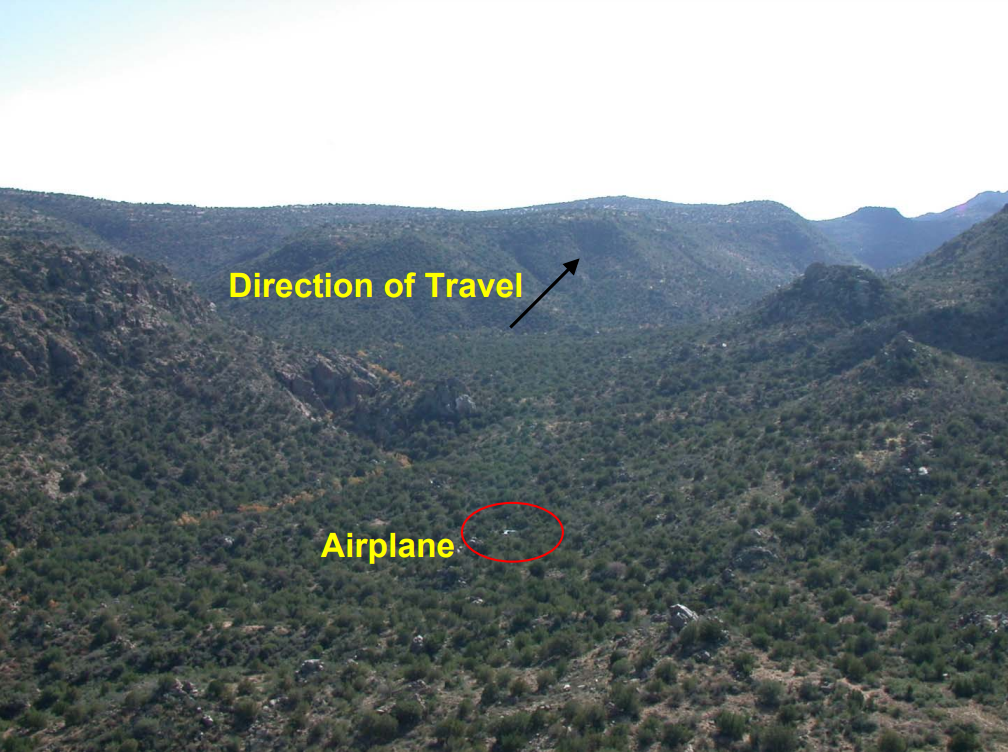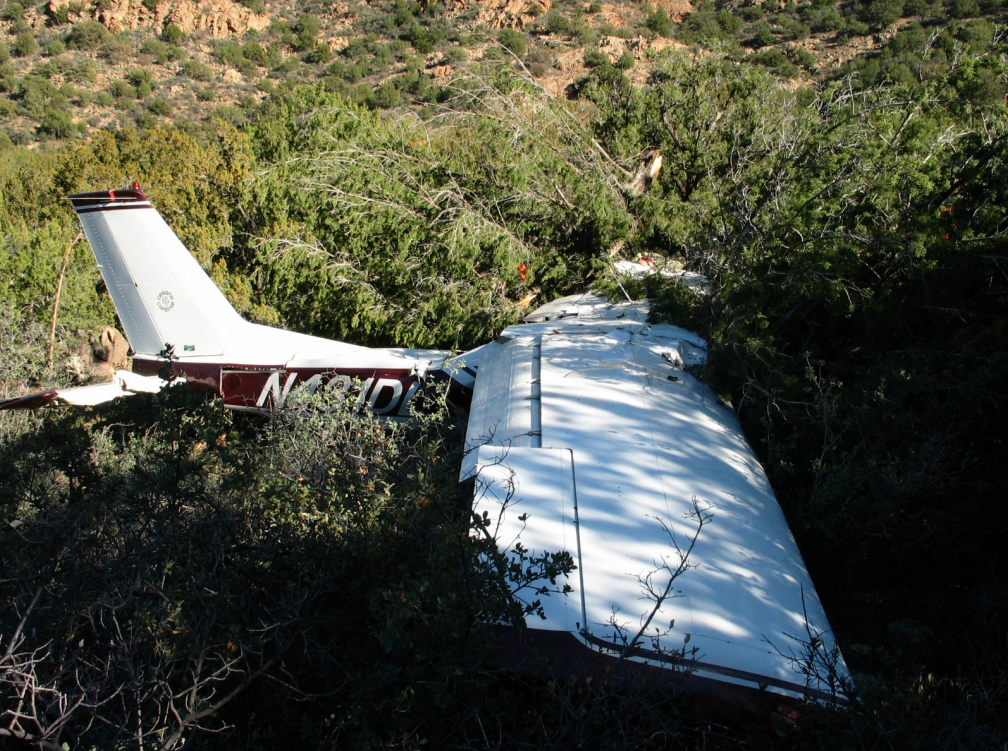
ASN Wikibase Occurrence # 294992
This information is added by users of ASN. Neither ASN nor the Flight Safety Foundation are responsible for the completeness or correctness of this information.
If you feel this information is incomplete or incorrect, you can submit corrected information.
| Date: | Thursday 13 November 2003 |
| Time: | 09:25 |
| Type: |  Cessna 177RG Cardinal RG |
| Owner/operator: | Private |
| Registration: | N431DL |
| MSN: | 177RG0762 |
| Total airframe hrs: | 4220 hours |
| Engine model: | Lycoming IO-360-A1B6D |
| Fatalities: | Fatalities: 1 / Occupants: 1 |
| Aircraft damage: | Destroyed |
| Category: | Accident |
| Location: | Blk Canyon City, AZ -
 United States of America United States of America
|
| Phase: | En route |
| Nature: | Private |
| Departure airport: | Flagstaff-Pulliam Airport, AZ (FLG/KFLG) |
| Phoenix-Deer Valley Airport, AZ (DVT/KDVT) | |
| Investigating agency: | NTSB |
| Confidence Rating: |
On November 13, 2003, about 0925 mountain standard time, a Cessna 177RG, N431DL, collided with mountainous terrain after the pilot reported experiencing engine problems 12 miles east of Black Canyon City, Arizona. The airline transport pilot/owner operated the airplane under the provisions of 14 CFR Part 91. The airplane was destroyed. The pilot, the sole occupant, sustained fatal injuries. The charity cross-country flight departed Flagstaff Pulliam Airport (FLG), Flagstaff, Arizona, about 0840, en route to the Phoenix Deer Valley Airport (DVT), Phoenix, Arizona, with an ultimate destination to the Bob Hope Airport (BUR), Burbank, California. Day visual meteorological conditions prevailed, and an instrument flight rules (IFR) flight plan had been filed. The primary wreckage was at 34-degrees 06.330 minutes north latitude and 111-degrees 57.675 minutes west longitude.
During cruise flight over mountainous terrain, a loss of engine power occurred and the airplane impacted trees during the subsequent forced landing attempt. The pilot radioed air traffic control personnel that the engine was losing power and would not sustain flight. He was attempting to make it to an airport when the airplane impacted trees in mountainous terrain. An airframe inspection was conducted with no discrepancies noted that would have precluded normal operation. The engine was equipped with a single-drive dual magneto that remained secure at its mounting pad. During manual rotation of the crankshaft, investigators could hear the "snapping" of the coupling, but no spark was observed at any of the leads. Magneto-to-engine timing could not be established because the contacts were not breaking electrical continuity. A functional check by the magneto manufacturer revealed that both magneto primary circuits had short-circuited to ground in all magnet positions, which was consistent with the breaker points not opening. Disassembly revealed that the plastic cam followers were melted and smeared in the direction of normal cam rotation. The breaker cams, made of sintered iron material, are supposed to be impregnated with oil per the service manual or production instructions for lubrication purposes at each overhaul. The oil lubricates the surface of the breaker cams over the cams service life. Four months prior to the accident the single-drive dual magneto had been removed, and the mechanic at a local fixed based operator had internally timed the magneto, then had completed a ground run and full operational check. The accident flight occurred 38.2 hours after this maintenance operation. According to the manufacturer, to internally time the magneto, maintenance personnel have to partially disassemble the magneto and physically touch the cam and breaker points. In accordance with the Service Support Manual instructions for the magneto, during this process the breaker cams and contact points should be inspected for lubrication, wear, burning, or melting. The on-scene examination revealed that the pilot was not wearing his shoulder harness, which remained stowed in the stowage sheath above the pilot's cabin door. The airframe manufacturer indicated that the airplane had been delivered new in 1975 with shoulder harnesses as standard equipment for the pilot and co-pilot. The coroner listed the cause of death as blunt force craniocerebral trauma due to an airplane crash.
Probable Cause: A loss of engine power due to the failure of the single-drive dual magneto that resulted from inadequate lubrication of the breaker cam. Also causal was the improper maintenance by other maintenance personnel during a recent inspection, which should have detected the lubrication deficiency. A contributing factor in the accident that likely exacerbated the pilot's injuries was his decision not to wear the installed shoulder harness.
Accident investigation:
 |
|
Sources:
NTSB LAX04FA042
Images:




Photo: NTSB
Revision history:
| Date/time | Contributor | Updates |
|---|---|---|
| 12-Oct-2022 16:39 | ASN Update Bot | Added |
Corrections or additions? ... Edit this accident description
The Aviation Safety Network is an exclusive service provided by:


 ©2024 Flight Safety Foundation
©2024 Flight Safety Foundation